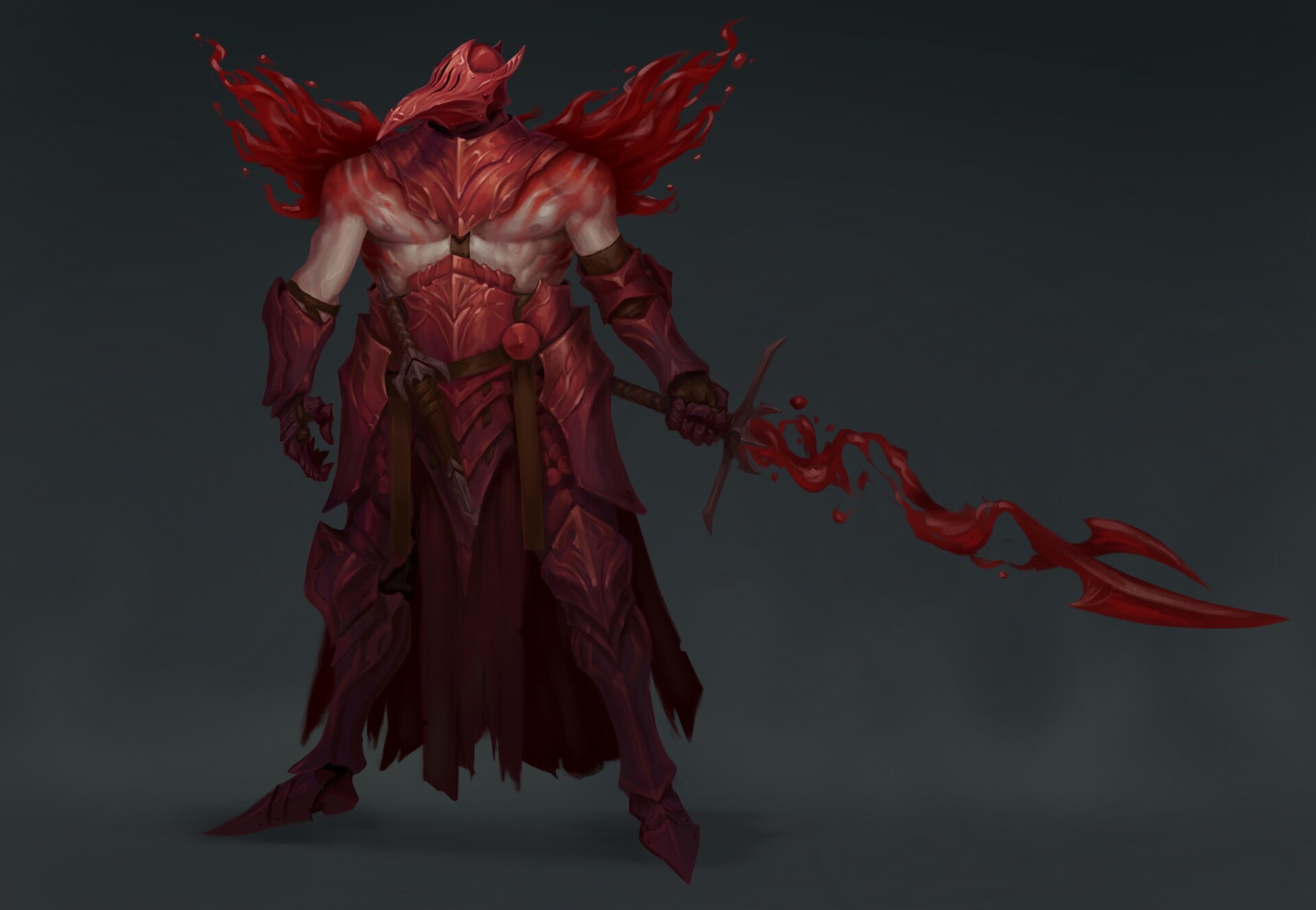Blood-Eagle Knight (5e Creature)
Blood-Eagle Knight[edit]
|
Medium undead, lawful evil Armor Class 17 (half plate)
Skills Athletics +8, Intimidation +7, Perception +5 Bloodletting. After the knight deals necrotic damage to creature that is not a construct or undead, the creature’s hit point maximum decreases by the same amount until it completes a long rest and the knight gains advantage on its next rotmesser attack against the creature. When a creature’s hit point maximum is reduced to 0, it dies. Magic Resistance. The knight has advantage on saving throws against spells and other magical effects. Undead Fortitude. If damage reduces the knight to 0 hit points, it must make a Constitution saving throw with a DC of 5 + the damage taken, unless the damage is radiant or from a critical hit. On a success, the knight drops to 1 hit point instead. Final Service. When the knight is reduced to 0 hit points, it explodes in bloody gore. Any creature within 30 feet of it must make a DC 15 dex saving throw, taking 15 (6d4) necrotic damage on a failure or half as much on a success. Thanks to the lingering gore, undead creatures have advantage on Wisdom (Perception) checks and attack rolls against any creature that fails the saving throw until it completes a long rest. ACTIONSMultiattack. The knight can make two rotmesser attacks and cast a spell or use slash of life. Rotmesser. Melee Weapon Attack: +8 to hit, reach 5 ft., one target. Hit: 18 (4d6 + 4) necrotic damage. The target can’t regain hit points until the start of the knight’s next turn and, if this attack scores a critical hit, becomes frightened until the end of its next turn. Slash of Life. The knight swings and extends its liquid blade in wide arc of death. Any creature in 15-foot cone emanating from the knight must succeed on a DC 15 Dexterity saving throw or take 15 (6d4) necrotic damage and becomes frightened until the end of its next turn. Spellcasting. The knight is an 11th-level spellcaster. Its spellcasting ability is Charisma (spell save DC 15, +7 to hit with spell attacks). The knight has the following spells prepared and can cast them without material components: Cantrips (at will): blade ward, sapping sting, toll the dead Blood Rush (Recharge 6). The knight vanishes into a foul cloud of red vapor as it chooses up to 6 different creatures it can see within 30 feet. The knight teleport to an unoccupied space within 5 feet of each target, makes rotmesser attack against the creature, then teleports to the next target. After it makes its last attack roll as part of this action, the knight teleports to an unoccupied space it can see within 15 feet of its last target. REACTIONSDread Defense. When a ranged attack hits the knight, it can sheath itself in bloody armor to halve the attack’s damage, then cast toll the dead on the attacker. If the target fails the cantrip’s saving throw, it becomes frightened until the end of the knight’s next turn. Red Riposte. When a melee attack hits the knight, it can dissolve into a bloody mist to halve the attack’s damage, then teleport up to 15 feet and make a rotmesser attack against the attacker. If this attack is successful, the target becomes frightened until the end of the knight’s next turn. Stabilization. When the knight fails a saving throw against a spell or other magical effect, it can deal 9 (2d8) necrotic damage to itself to roll a d8 and add it to the saving throw, possibly turning a failure into a success. If the knight succeeds on the saving throw, it gains advantage on its next rotmesser attack and increases the attack’s damage by 9 (2d8). |
Few necromancers ever want to let a good corpse go to waste, especially not the powerful form of a paladin that was probably trying to kill them before their expiration. Through a grisly necromantic ritual requiring internal surgery and copious amounts of blood, some advanced necromancers, most often vampires or death knights, can raise a blood-eagle knight out of warriors with magical capabilities to act as shock troops or bodyguards for their further dark schemes. The process also creates a sword with a metamorphic blade of liquid, necromancy-infused blood as a side effect. While the new undead will retain some semblance of their former personality, it will quickly be deteriorated by an insatiable lust for blood chained only by their creator’s will alongside its ability to act. A blood-eagle knight will always fight to the end of its tortuous existence unless ordered otherwise by its master. It is also intelligent, or perhaps instinctual, enough to recognize when a creature it is attacking has some form of resistance against necrotic damage and will move on to more vulnerable victims if possible. Unusual Nature. The knight doesn't require air, food, drink, or sleep. |
Back to Main Page → 5e Homebrew → Creatures

